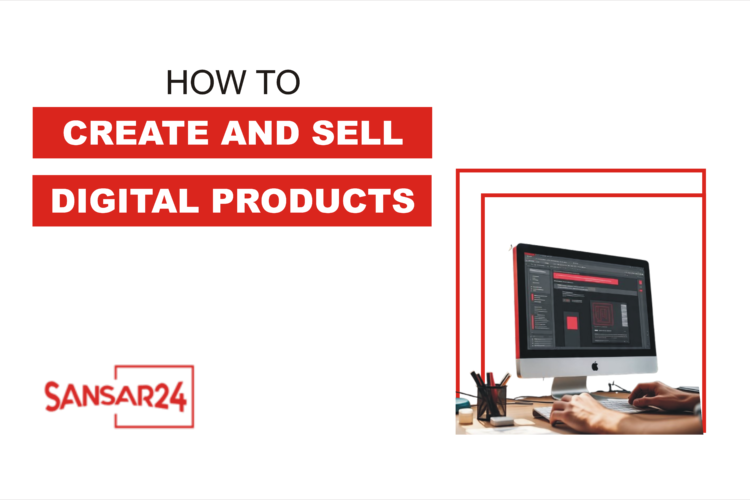In today’s digital world, creating and selling digital products is a great way to build a business with low overhead costs and unlimited potential. Whether you’re an entrepreneur or just someone looking to make extra income, digital products offer a flexible and scalable business model. In this article, we’ll cover the basics of creating digital products and how to sell them online.
What Are Digital Products?
Digital products are goods that are delivered electronically. They don’t require physical storage or shipping, making them cost-effective and easy to distribute. Common types of digital products include:
- E-books: Digital books on various topics.
- Online Courses: Educational content delivered through videos, texts, or interactive modules.
- Software and Apps: Programs or mobile apps designed for specific tasks.
- Digital Art: Graphics, illustrations, or photos that can be downloaded and used.
- Templates and Printables: Documents, planners, resumes, or design templates.
- Music and Audio Files: Tracks, sound effects, and audio recordings.
Why Create and Sell Digital Products?
- Low Overhead: There are no production or shipping costs involved.
- Passive Income: Once created, digital products can generate ongoing sales with minimal effort.
- Global Reach: Your products can be sold to anyone, anywhere in the world.
- Scalability: As your business grows, you can create more products to expand your offerings without adding significant extra costs.
Steps to Create and Sell Digital Products
Here are some steps to sell and create digital products:
1. Identify Your Niche
Before you start creating, it’s essential to know who your target audience is. Find a niche where there’s demand for digital products, and consider your skills or interests. You might want to create something you’re passionate about—whether it’s educational material, creative resources, or software solutions.
2. Create the Product
Now, it’s time to build your digital product. Here are a few ideas:
- For e-books: Research your topic, outline the content, and write it in a clear and engaging style.
- For online courses: Plan the curriculum, record videos, and organize content into digestible lessons.
- For software or apps: Define your app’s purpose, design user-friendly features, and test functionality.
- For printables and templates: Design easy-to-use documents using tools like Canva or Adobe Creative Suite.
Focus on quality and ensure that your product solves a problem or adds value to your customers.
3. Choose a Platform to Sell On
To sell your digital product, you need a platform that allows you to reach your audience. Some popular options include:
- E-commerce Websites: Platforms like Shopify, WooCommerce, or BigCommerce let you set up an online store.
- Marketplaces: Websites like Etsy, Gumroad, or Teachable allow you to list your products on a larger marketplace.
- Your Own Website: If you already have a website, you can integrate a shopping cart and payment system to sell directly.
4. Set Up Payment and Delivery Systems
For smooth transactions, set up secure payment options such as PayPal, Stripe, or credit card processing. Make sure your digital product is automatically delivered to customers once they purchase it, either via email or through a direct download link.
5. Market Your Product
Creating a great product is just the beginning. Now you need to promote it:
- Social Media: Use platforms like Instagram, Facebook, and Twitter to showcase your product.
- Email Marketing: Build an email list and send out newsletters to keep potential customers engaged.
- Content Marketing: Start a blog, create YouTube videos, or host webinars to demonstrate your expertise.
- Paid Ads: Consider running ads on social media or Google to reach a wider audience.
Monitor and Improve
Once your product is up for sale, track your sales and gather customer feedback. Monitor which products are performing best and consider creating more based on the demand. Regularly update your products to keep them fresh and valuable.
Conclusion:
Creating and selling digital products is a rewarding venture that allows you to reach a global audience with minimal upfront investment. Whether you’re selling e-books, courses, or software, the key is to focus on quality, target the right audience, and market effectively. With the right strategy, your digital products can generate passive income and grow your business for years to come.
Are you ready to create your digital product? The digital world is waiting!

